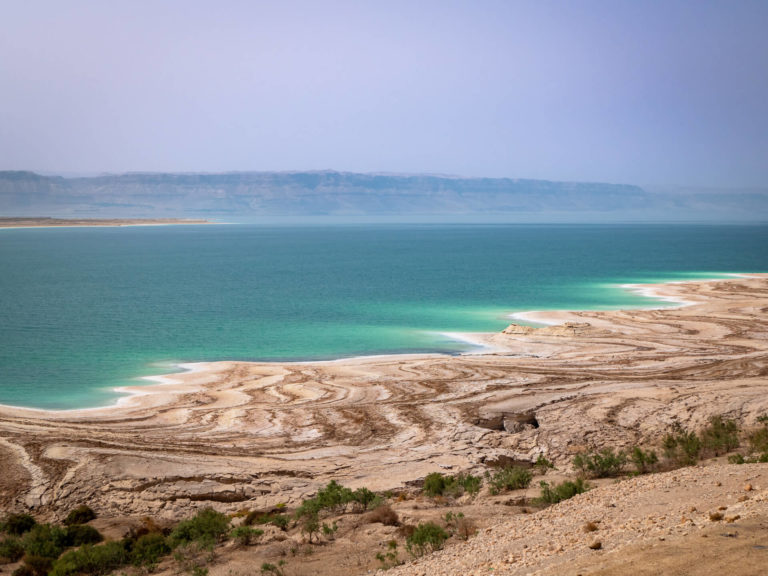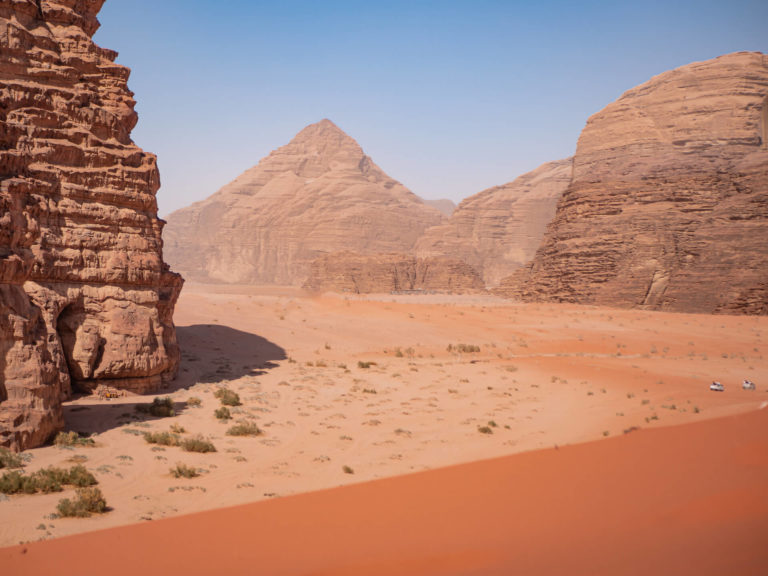Top things to do in Zanzibar (& what not to do)
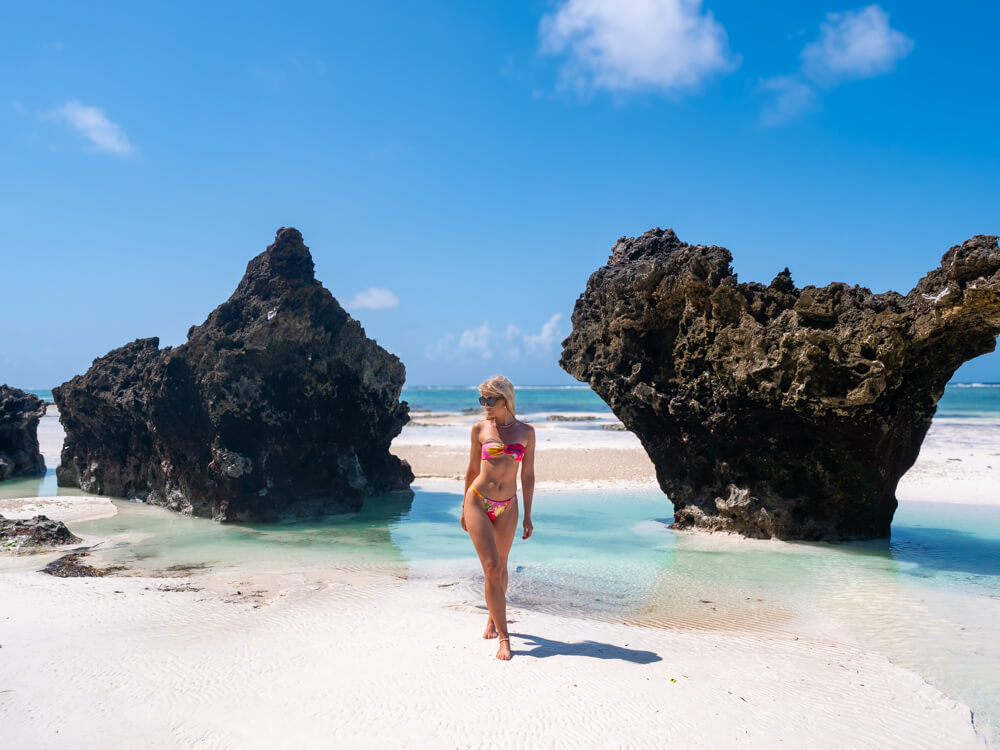
Zanzibar, the wonderful Spice Island of Tanzania, is famous for its dreamy beaches with white sand and irresistible blue water. However, this island is so much more than just a beach holiday destination. It’s a place with a complicated history, unique culture, mouthwatering cuisine, tropical nature and fascinating wildlife both on land and underwater.
I spent 10 days in Zanzibar during my Tanzania trip, visiting both the famous spots and the lesser-known gems and going on various tours. So in this post, I’ve rounded up the best things to do in Zanzibar, together with my personal experience, to help you decide what to see and do during your vacation. I’ve also listed a few places and activities in Zanzibar that you should avoid due to ethical reasons.
To make your travel planning easier, I’ve also created a map which gives you an overview of where all the top attractions of Zanzibar are located. You’ll find it at the end of the post. Be sure to also read my Zanzibar travel guide, where you’ll find lots of tips and practical info about visiting the island.
Without further ado, here’s what to do in Zanzibar.
Disclosure: This article contains affiliate links from which I may make a commission at no additional cost to you if you make a purchase. I was invited to visit Zuri Zanzibar and stay at The Nest Hotel but as always, all opinions are my own.
Best things to do in Zanzibar:
1) Wander around Stone Town
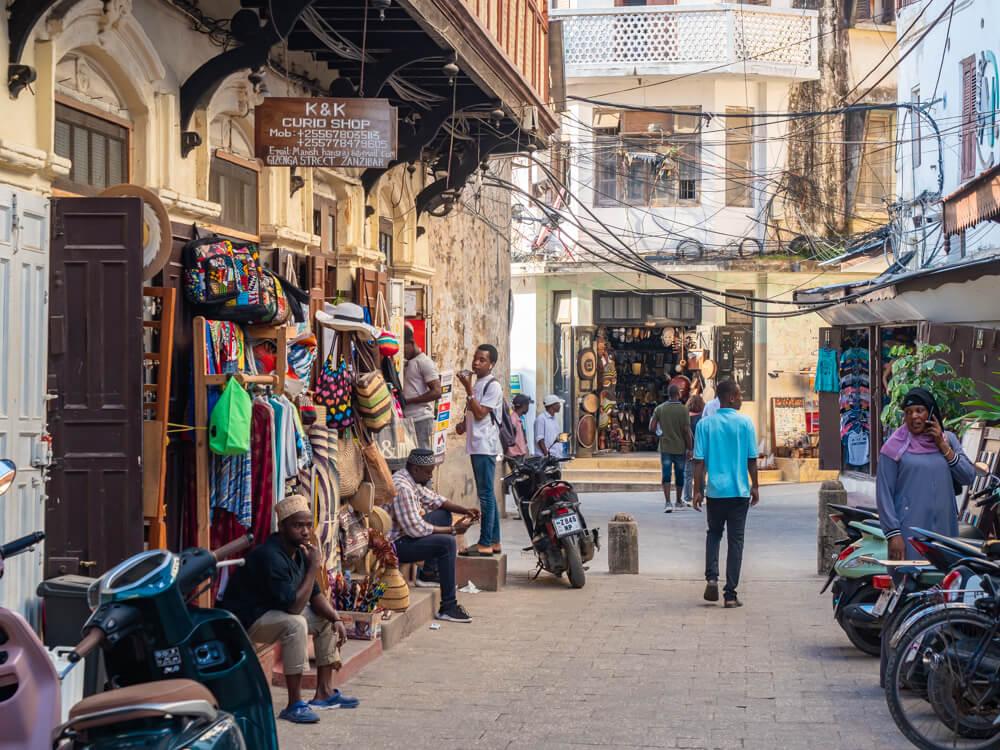
The best way to start your Zanzibar trip is to explore Stone Town, the historic center of the island’s capital, Zanzibar City. Stone Town is a UNESCO World Heritage Site and has a unique culture and architecture shaped by Swahili, Arab, Indian and European influences. It reminded me a bit of Jordan and Morocco.
This is a legacy of Zanzibar’s history as a hub for international spice and slave trade, as well as the fact that the island has been under the rule of Portugal, Oman and Great Britain.
The best way to explore Stone Town is on foot. Within its labyrinth of narrow winding streets, you’ll find countless boutiques and souvenir shops, charming cafes and crumbling buildings with intricately carved wooden doors.
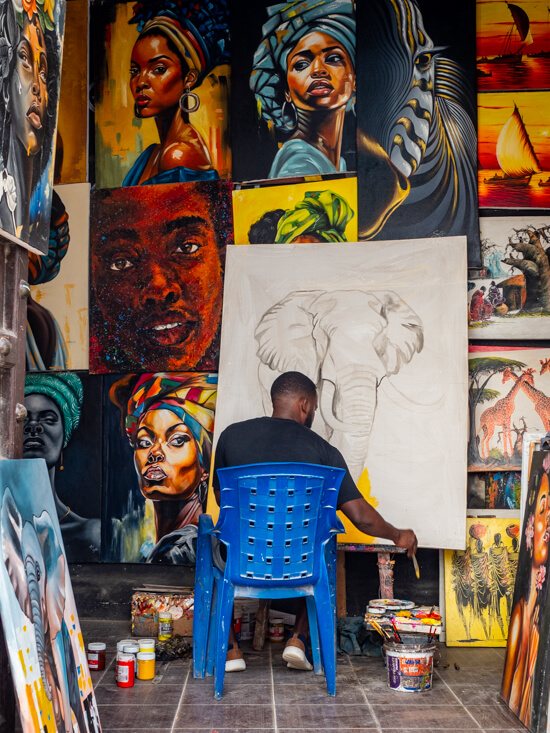
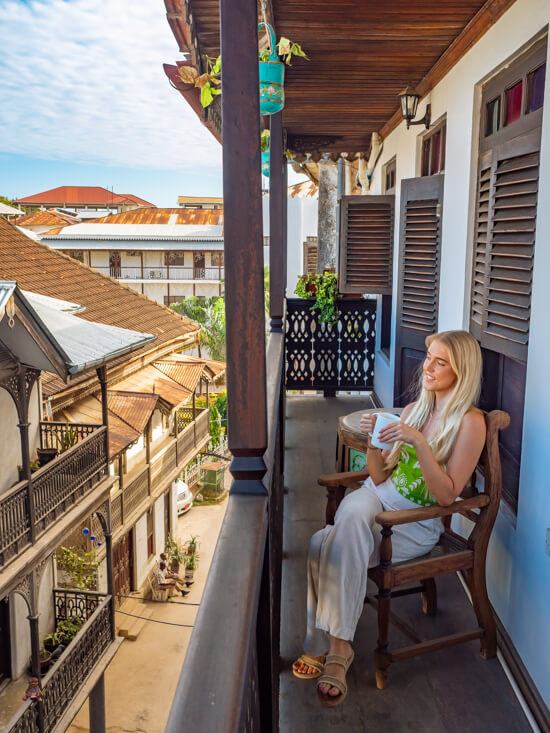
Some of the main points of interest here are the East Africa Slave Trade Exhibit, Old Fort, the house of Freddy Mercury and Darajani Bazaar, which is a loud, hectic market selling all kinds of food items. If you’d like to get a deeper understanding of Stone Town’s culture and history, consider taking this guided walking tour.
Around sunset, the Forodhani Gardens at the waterfront of Stone Town become a lively gathering spot. Here you can explore the Forodhani street food market and watch local boys perform acrobatic dives into the sea.
2) Dive or snorkel at Mnemba Atoll
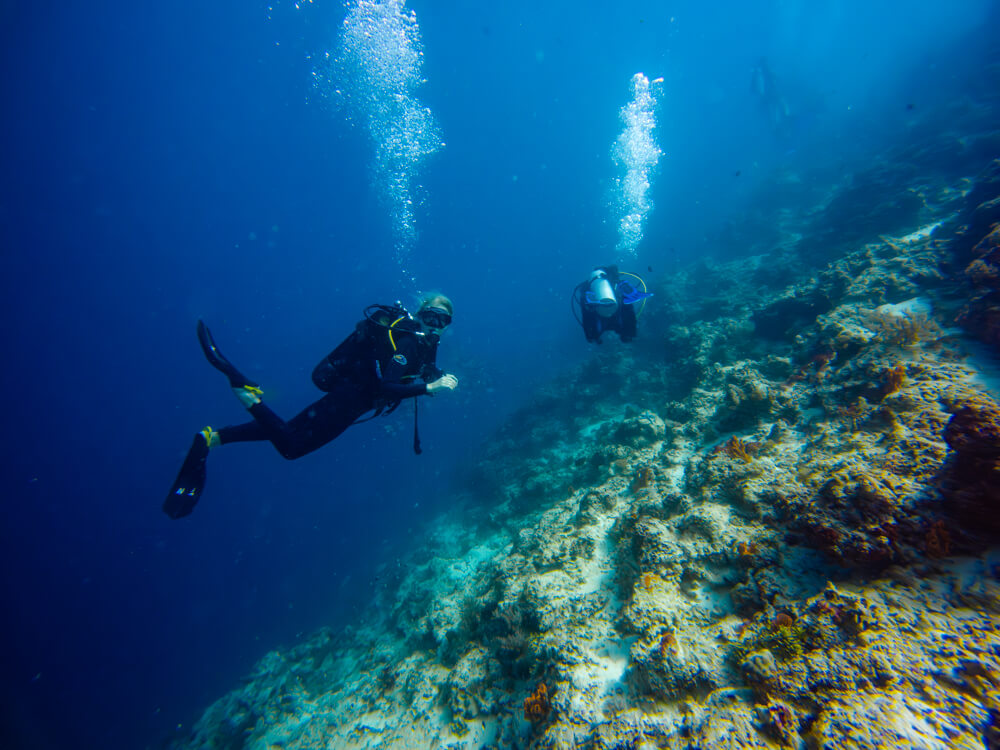
Located off the northeast coast of Zanzibar, Mnemba Atoll is a coral reef surrounding the small Mnemba Island. It’s a marine conservation area and is considered the best place for scuba diving and snorkeling in Zanzibar.
We did two dives at Mnemba Atoll and saw a white moray eel, pufferfish, lionfish and many other small fish. Unfortunately, the coral looked quite dead, but overall it was still a good experience. We did our dives with Scubafish Dive Center and can highly recommend them.
If you’re not a diver, you can take a snorkeling tour to Mnemba Atoll instead. The snorkeling tours usually also include swimming with dolphins in the same area. Unfortunately, most of these tours are unethical, even if the tour operator says they’re not. I’ll go into more detail about this topic in the section about what not to do in Zanzibar.
Do your research and read reviews before booking your snorkeling tour to be sure that you’re not contributing to the unethical treatment of dolphins.
3) Swim in Maalum Cave
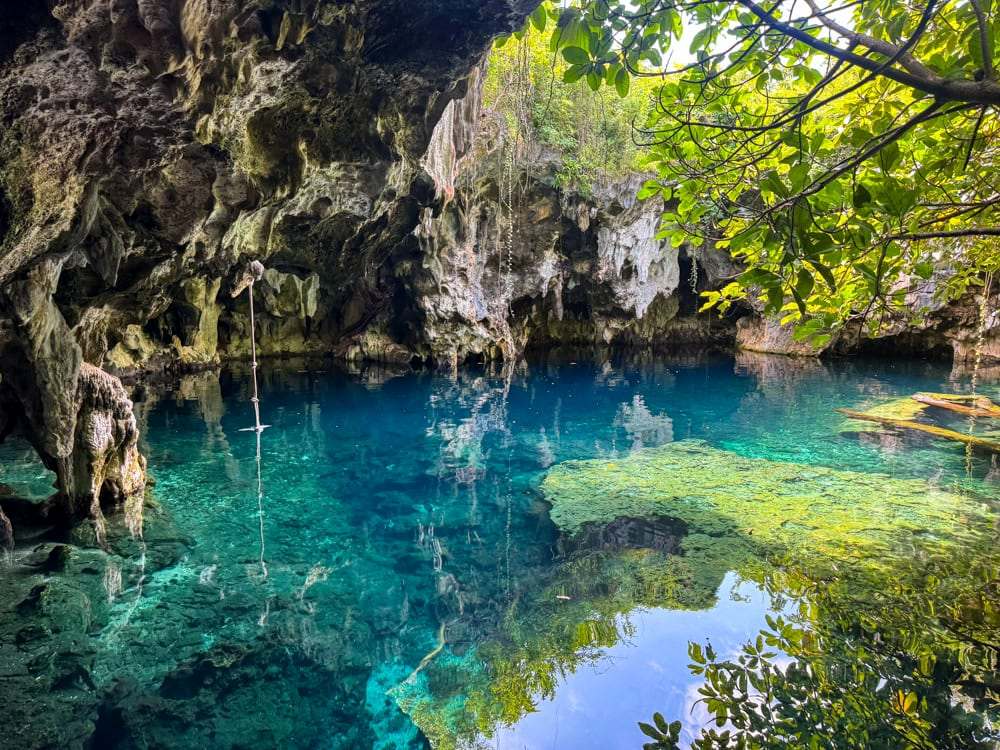
Just outside the village of Paje, you’ll find the enchanting Maalum Cave. It’s somewhat of a hidden gem that not many tourists seem to be aware of, but it ended up being one of my favorite places in Zanzibar.
Surrounded by tropical vegetation, this limestone cave has a natural swimming pool filled with crystal clear water. Here you can snorkel, swim, relax and just take in the natural beauty of this place. The water temperature is really pleasant, and there are some small fish and crabs in the water.
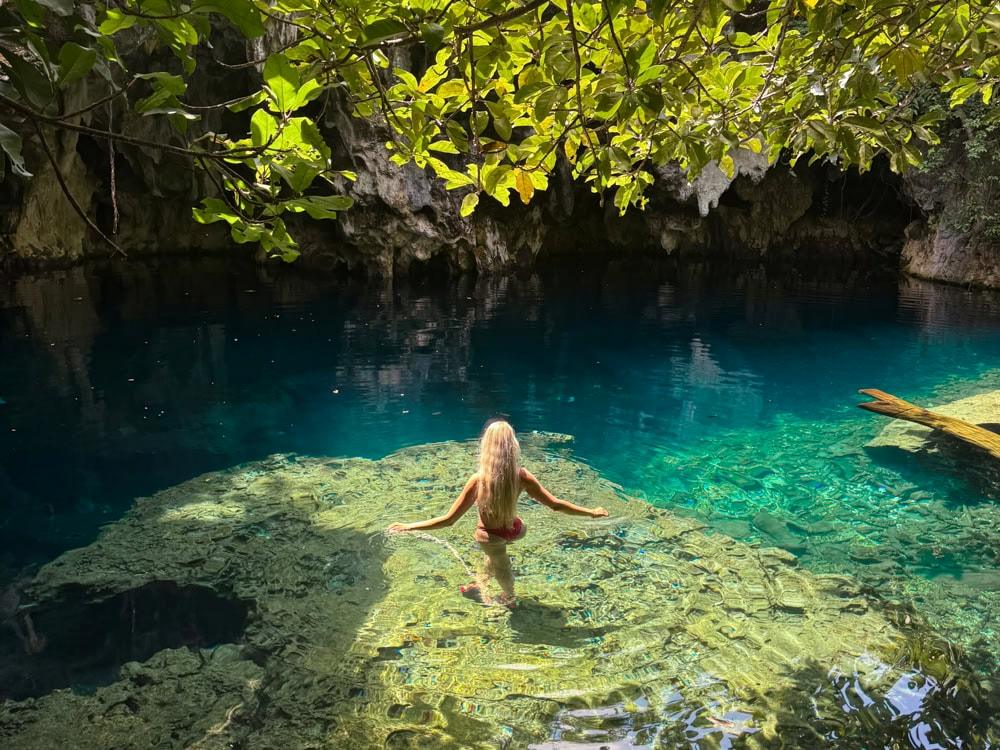
Besides the swimming hole, there’s a small spa where you can get a massage, a restaurant and a lovely relaxation area among tropical trees. The entrance fee to Maalum is 20 USD, which is pretty steep but worth it. Book your visit online to be sure that you get your preferred time slot.
Tip: A cheaper alternative to Maalum is Kuza Cave (10 USD). However, it’s apparently not as beautiful as Maalum, and the facilities around it are in a bad state.
4) Relax on the beautiful beaches
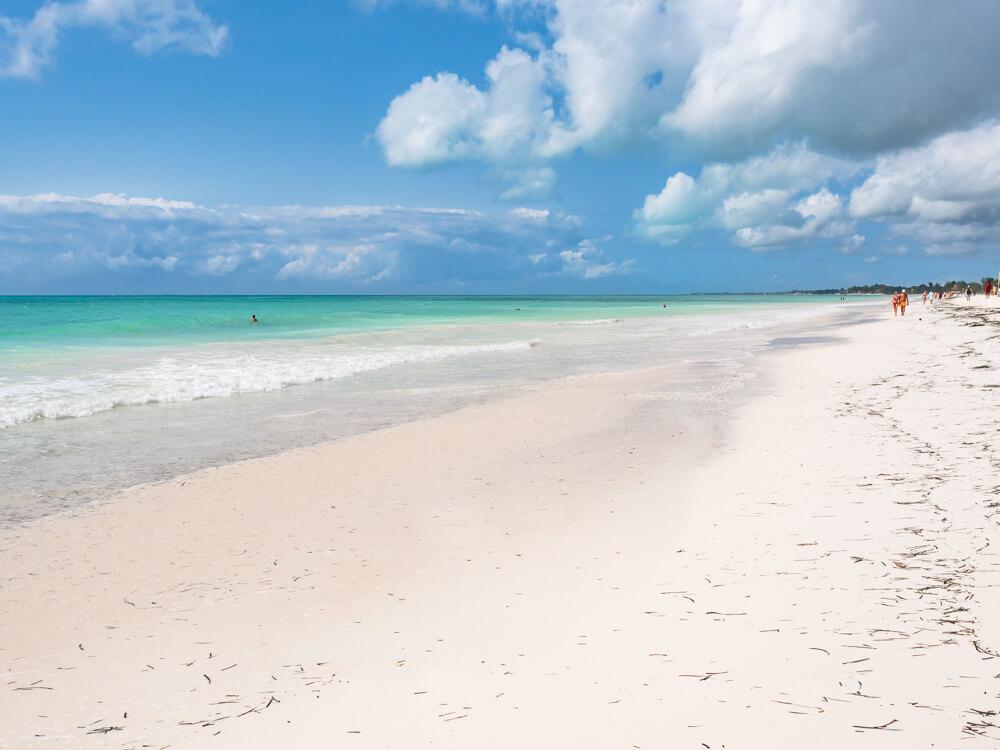
Zanzibar has some of the best beaches in Africa, so if you’re a beach bum, you’re in for a treat! With approximately 250 km (155 mi) of coastline, where blindingly white sands meet neon blue ocean, there’s no shortage of beaches on this island.
Be aware that the beaches on the east coast of Zanzibar are affected by big tidal changes. This means that at low tide, swimming is not possible because the water recedes very far. Check tide schedules beforehand to avoid negative surprises.
These are the best beaches in Zanzibar:
- Paje Beach: My favorite beach on the island. There’s a wide stretch of sand, clear water and nice beachside restaurants. It’s a lively beach, but since it’s so big, it never feels too crowded.
- Nungwi & Kendwa Beach: Very popular beaches on the north coast where the tidal changes are much smaller, so you can swim at any time. Although these beaches are beautiful, they get extremely busy in the high season. Also, if you’re looking to party, this is the area to be.
- Mtende Beach: A less developed beach with a unique natural setting, surrounded by coral cliffs. I’ll go into more detail about this beach further below.
5) See colobus monkeys at Jozani Forest
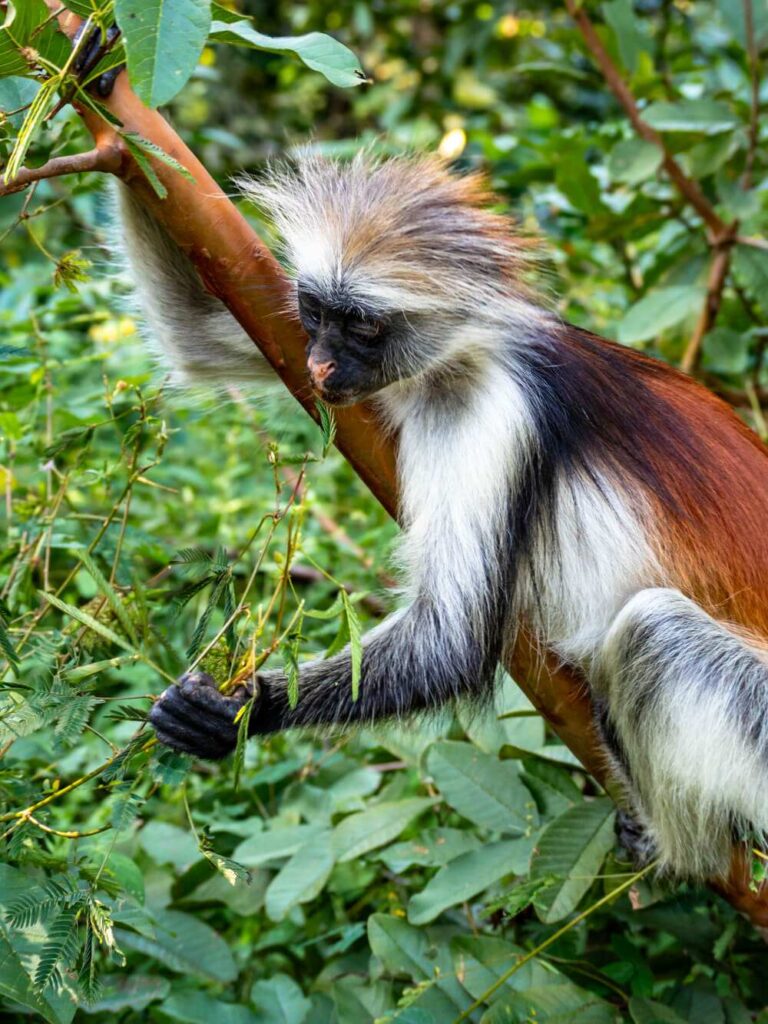
Another one of the best things to do in Zanzibar is to visit Jozani Forest, especially for those who love wildlife. Officially called Jozani-Chwaka Bay National Park, it consists of tropical forest and mangroves, and is the only national park on the island.
The park is home to a variety of wildlife, including the endemic Zanzibar Red Colobus Monkey found nowhere else in the world. During our visit, we also saw Sykes’ monkeys, elephant shrews and large millipedes, but if you’re lucky, you might even spot bush babies and chameleons.
The entrance fee to the park is 12 USD. You’ll be assigned a guide who will walk with you, tell you about the local nature and find the different animals for you in the forest. It’s expected that you tip the guide at the end (about 10 USD).
6) Snorkel with starfish
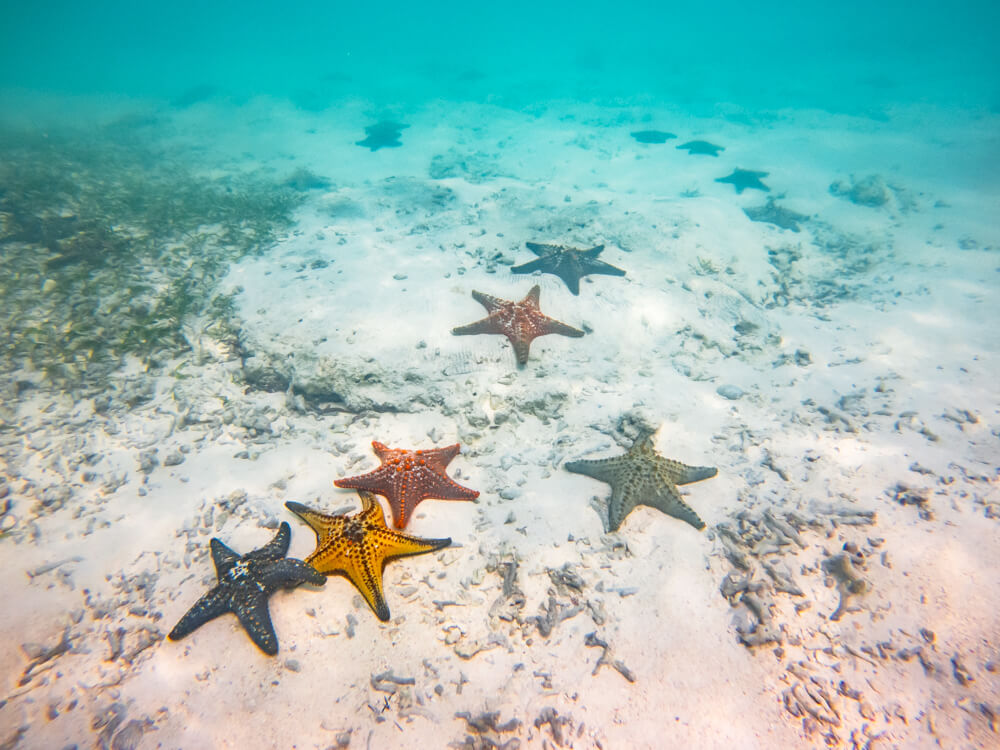
On the island’s east coast, near the village of Pingwe, there’s a shallow area in the sea teeming with colorful starfish. Snorkeling above this huge colony of starfish is one of the most unique things to do in Zanzibar, in my opinion. I had seen this type of starfish before during my travels (in Bocas del Toro, Panama), but never in such large amounts and different colors.
An important thing to note is that you should never touch the starfish or take them out of the water, as this can cause serious harm to these aquatic creatures.
I have marked the exact location of the starfish spot on the map at the end of this post. To get there, you can take a boat tour from The Rock Restaurant. This tour is usually combined with a visit to Blue Lagoon, another well-known snorkeling spot. I personally didn’t find Blue Lagoon impressive, since there wasn’t much to see, but perhaps we were just unlucky.
You can also book a full-day tour with stops at the starfish spot, Blue Lagoon and Maalum Cave, including pick-up from anywhere in Zanzibar.
7) Visit a spice farm
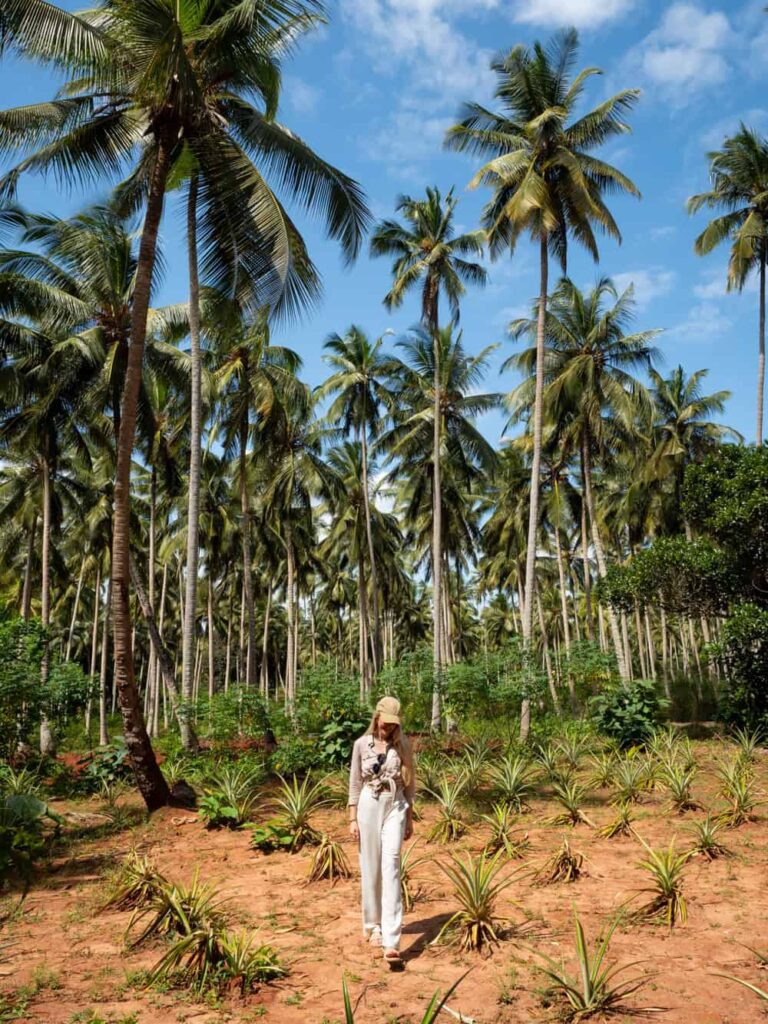
Another must-do in Zanzibar is taking a spice farm tour. The island is famous for its spices, such as clove, nutmeg, cinnamon, cardamom and pepper, and is also nicknamed the Spice Island.
There are many spice farms on the island, and the tours they offer are very similar. You typically have the option to either just explore the spice farm or also take a cooking class at the farm, where you’ll learn to make traditional Swahili cuisine.
We visited Siso Spice Farm and were very happy with our tour there. We learned a lot about all the different spices and local fruits and got to see how they’re cultivated. At the end, we also got to taste some super delicious lychees, pineapples and mangos grown at the farm.
The tour at Siso Spice Farm costs 5 USD per person, plus tips for the guide.
8) Explore Mtende Beach
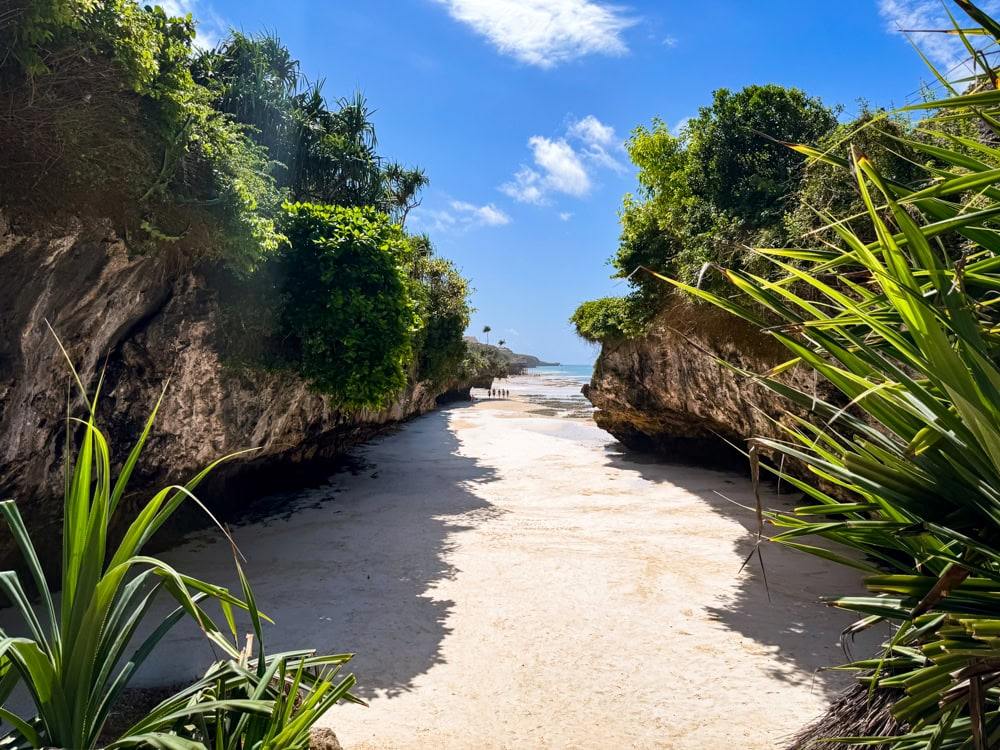
Mtende Beach is located on the southern tip of the island and is the most interesting beach in Zanzibar, in my opinion. The main area of the beach is sheltered between two cliffs, forming a long, narrow cove. There are some cool rock formations and tidal pools where you can see fish, crabs and starfish in the crystal clear water.
I also love that the beach is quite undeveloped and doesn’t have any sunbeds or beach bars. There are two restaurants on the cliffs above the beach, though.
Be aware that during high tide, the beach gets completely covered with water, whereas during low tide, the water recedes so far that you won’t be able to swim. Therefore, the best time to visit Mtende Beach is at mid tide. You can find the tide schedule online. After 3 pm, the beach will be in the shade, so try to be here earlier.
The entrance fee to the beach is 2000 TZS. You can also visit Mtende Beach on this guided 6-hour tour that includes a visit to Jozani Forest and a butterfly center.
9) Go on a sunset dhow boat cruise
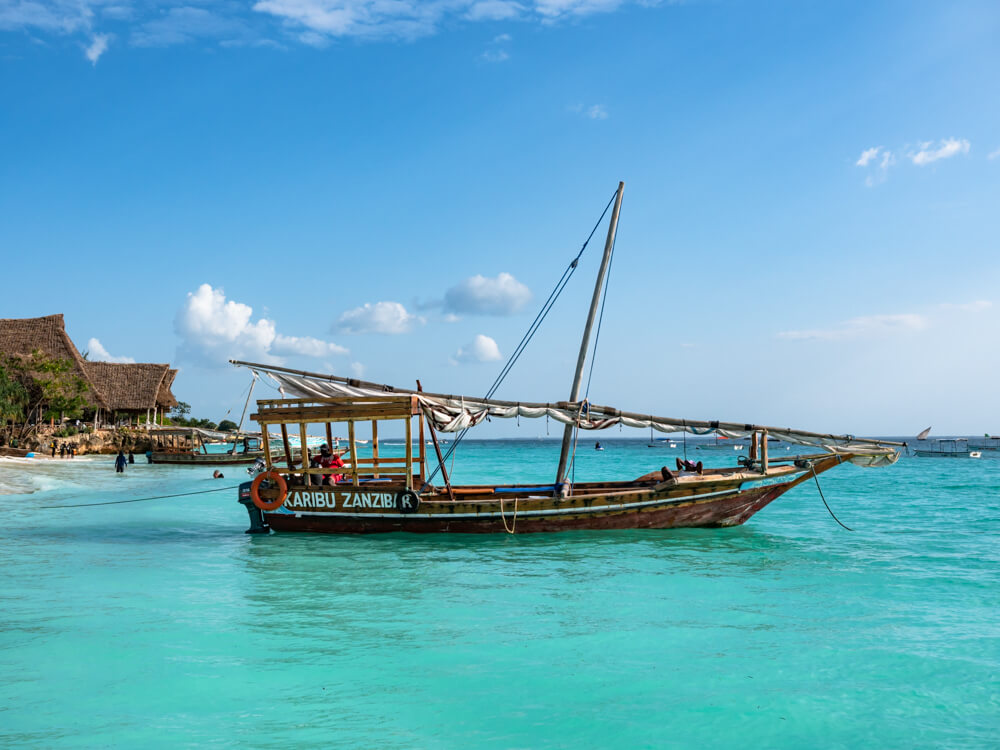
A fun and relaxing way to experience a bit of Zanzibar’s culture is to take a sunset dhow cruise. A dhow is a traditional wooden sailing boat used in Zanzibar and the rest of the Indian Ocean.
These cruises usually take place around sunset and depart from Nungwi Beach on the north coast of Zanzibar. On the boat, you’ll be served fresh fruits and watch a traditional music performance as the sun dips behind the horizon. You can either book the cruise online or find a tour operator on Nungwi Beach.
Related post: For information on how to get around the island, when to visit, what to wear and which visa and insurance you need, read my Zanzibar travel guide.
10) Treat yourself to a luxury hotel stay
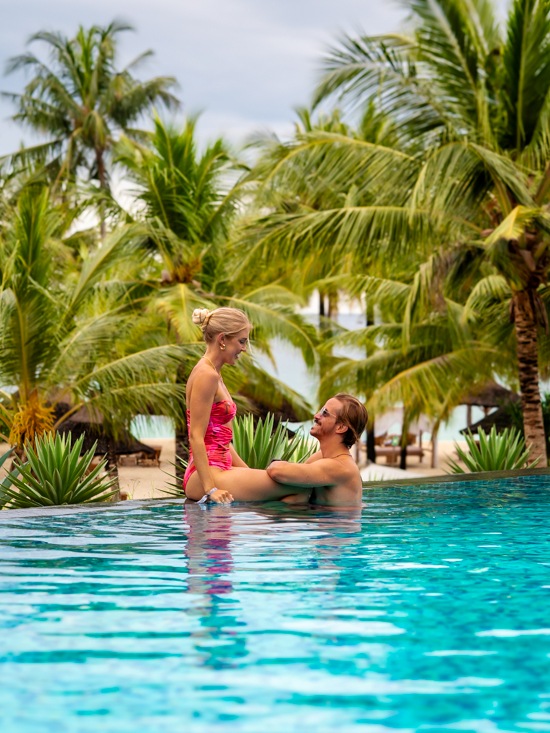
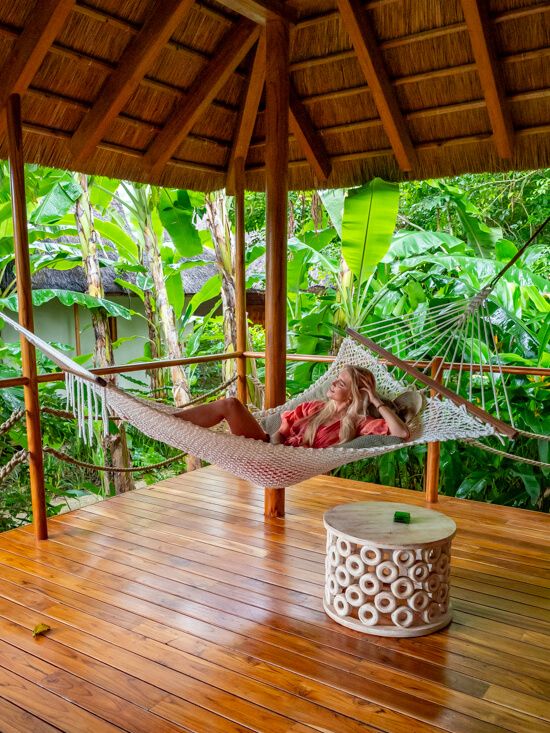
Zanzibar has some amazing hotels with luxurious villas, infinity pools, private beach areas and epic views of the turquoise ocean. If you’ve always dreamt of staying at a place like this, why not make this dream a reality on your Zanzibar trip?
Here are some of the best hotels in Zanzibar:
- Zuri Zanzibar: gorgeous bungalows, a huge tropical garden, an amazing private beach section and a sustainability mindset – I really enjoyed this place!
- Be Zanzibar Boutique Hotel: modern boho aesthetics, amazing food and exceptional service
- Bamboo Zanzibar: quiet location, cool architecture, huge infinity pool and the option to have a floating breakfast
- White Sand Villas: luxurious and spacious villas with elegant decor, tranquil ambience and upscale amenities
11) Watch a Maasai show
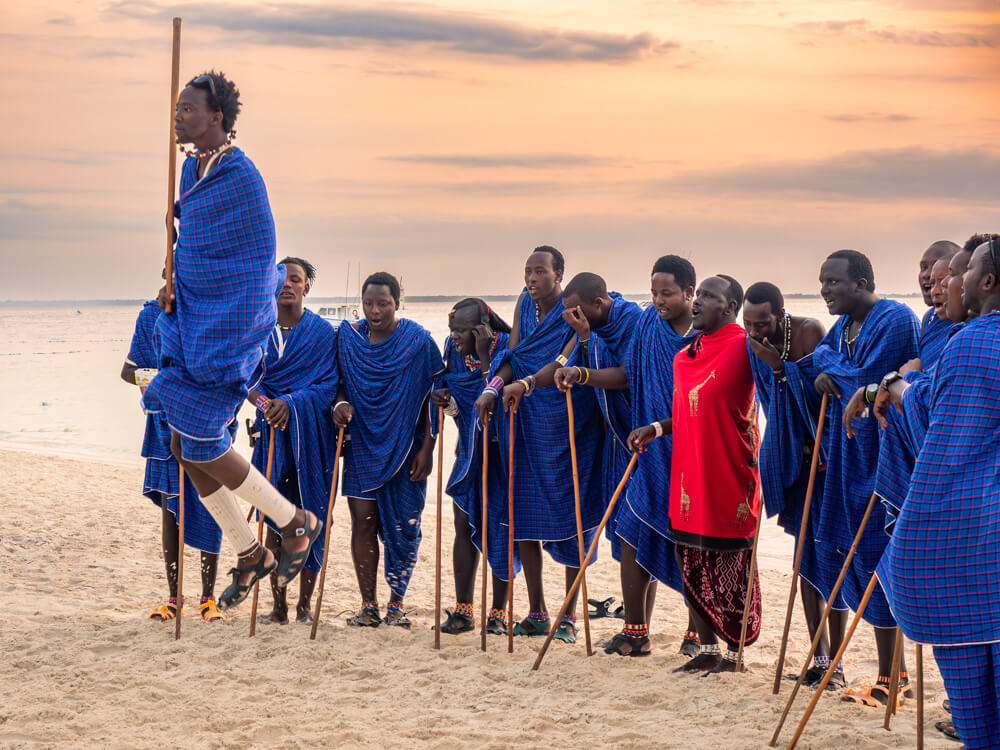
The Maasai are an ethnic group from northern Tanzania and Kenya. Although they’re originally not from Zanzibar, many Maasai boys and men come to the island to earn money through tourism. You can recognise them by their red or blue robes as they walk along the beaches of Zanzibar.
Many of the more upscale hotels offer Maasai shows to their guests, but I also saw the Maasai perform on a public beach in Nungwi, in front of Mangi’s Beach Bar. Their performance usually consists of a traditional jumping dance and throat singing. I really enjoyed watching their show; it was unlike anything I had seen before.
12) Explore the sea in a clear kayak
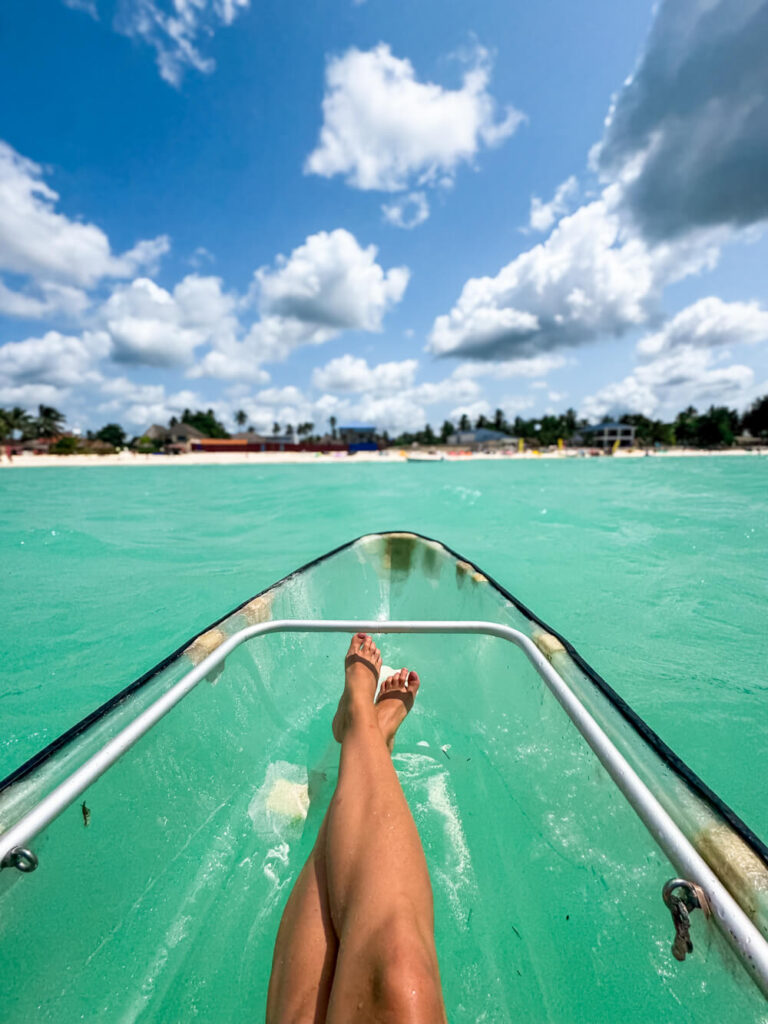
Another cool water activity in Zanzibar is paddling around the pristine blue waters in a transparent kayak. The best areas for doing this are Nungwi and Kendwa, but there are also a few kayak rentals in Paje.
If you’d like to get some epic photos of yourself while kayaking, you can book this highly rated clear kayak experience with drone photography in Nungwi. According to the reviews, the team is really professional, and they even give you tips on how to pose to get the best shots.
We rented a clear kayak from a random guy on Paje Beach. Unfortunately, our kayaking adventure quickly turned into a nightmare. The sea was a bit choppy that day, and I also suspect our kayak was broken because it started taking in water and sank while we were out on the sea! I’m so grateful we had life jackets.
Therefore, if you’re renting a kayak, my recommendations are that you should only do it when the sea is very calm and always have a life jacket with you (unless you’re just doing a photoshoot in shallow waters).
13) Go kitesurfing at Paje Beach
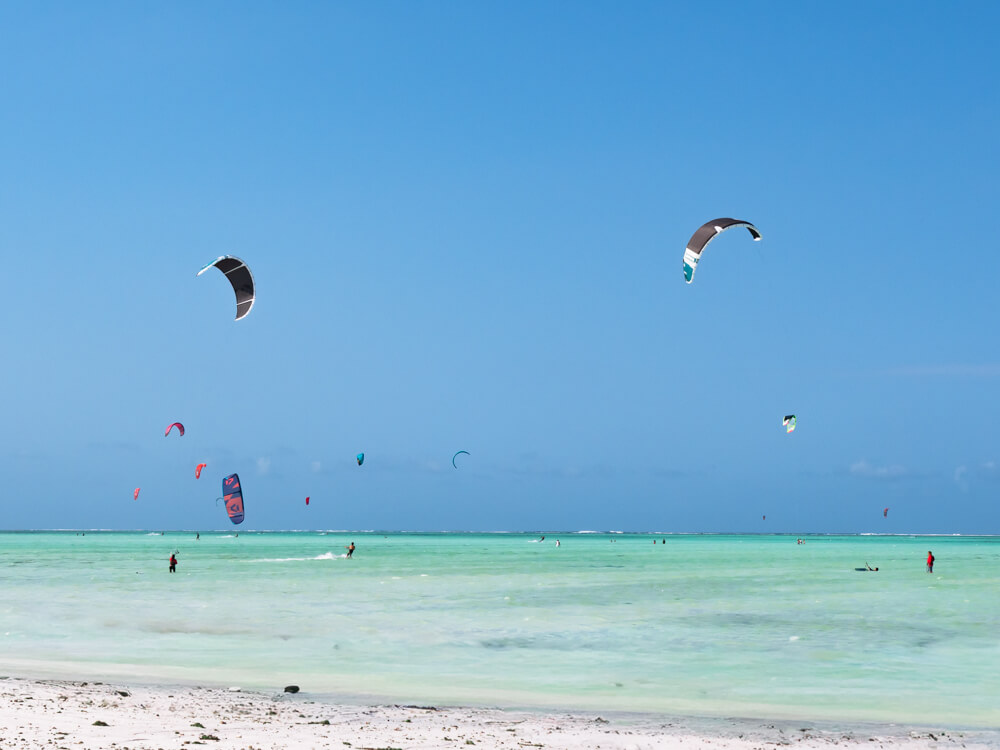
For the lovers of water sports, one of the top things to do in Zanzibar is to go kitesurfing. Paje Beach on the southeast coast of the island is a paradise for kitesurfers thanks to its consistent winds and shallow lagoon with very little coral.
As you visit Paje Beach, you’ll see dozens (if not hundreds) of kitesurfers gliding through the turquoise waters along the coastline. There are lots of kitesurfing schools and rental shops to choose from. Prices range from 40 to 85 USD per hour of the lesson.
14) Eat at The Rock Restaurant
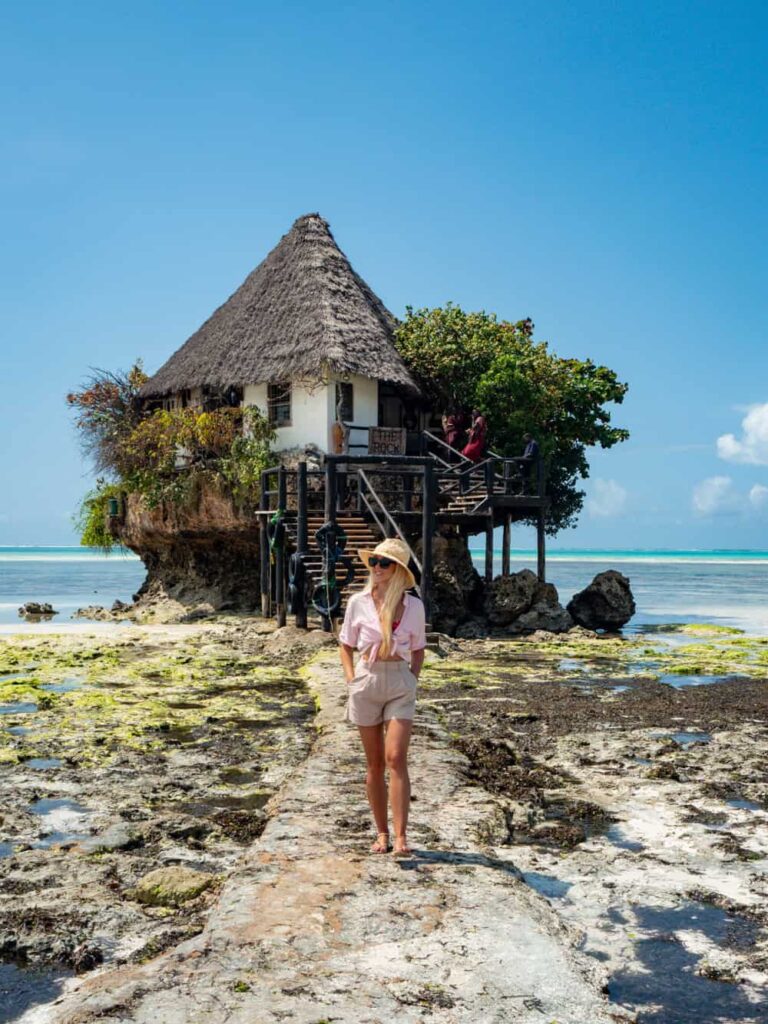
The Rock Restaurant in Pingwe is the most famous restaurant in Zanzibar, not because of its food but because of its unique look. The restaurant is perched on top of a large rock on Pingwe Beach and gets completely surrounded by water during high tide.
We were there during low tide, so it didn’t look quite as scenic, but I can only imagine how wonderful it must be to dine there surrounded by turquoise water.
The restaurant serves Italian cuisine with Zanzibari ingredients. If you want to eat there, make a reservation in advance because the restaurant is often full.
15) Take the Safari Blue tour
Another popular tour in Zanzibar is the Safari Blue. It’s a full-day boat tour that includes a variety of activities. The tour takes place at Menai Bay off the southwest coast of Zanzibar and includes pick-up and drop-off from anywhere on the island.
You’ll sail on a traditional wooden dhow boat, stop for snorkeling, swim in a mangrove lagoon, visit a sandbank, have a seafood lunch on a beach, enjoy some local fruit and maybe even see some dolphins along the way if you’re lucky.
16) Explore sandbanks
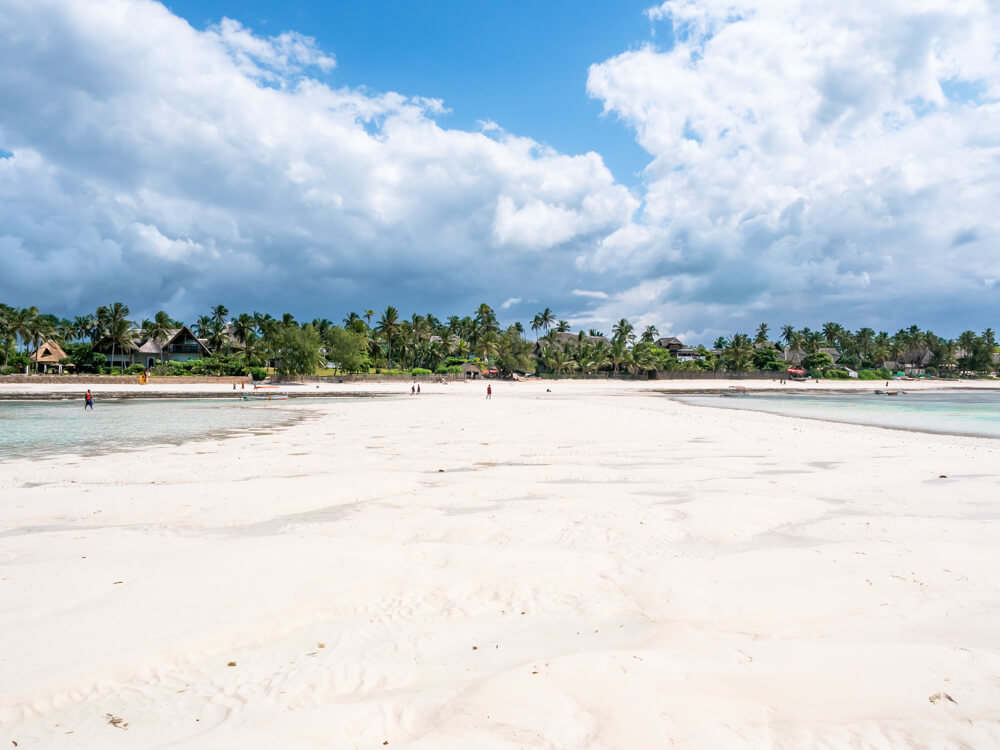
On both the east and west coasts of Zanzibar, there are several sandbanks that you can visit. These pristine white patches of sand only appear in the ocean during low tide, so you have to time your visit accordingly. Most of them can only be reached by a boat, whereas some are so close to the shore that you can walk to them.
The most popular sandbank to visit in Zanzibar is Nakupenda, which is just a 15-minute boat ride from Stone Town. It tends to get very crowded, so it’s better to be here early. Some of the quieter sandbanks in that area are Bawe, Pange and Nyange.
Some sandbanks that you can reach on foot are on the eastern side of Nungwi (in front of Sazani Beach Lodge) and off the coast of Jambiani.
17) Go on a safari at Mikumi National Park
If doing a multi-day safari in the iconic national parks of northern Tanzania is not in your travel plans, but you still want to see some African wildlife, a day trip to Mikumi National Park on the mainland is a good option.
On this full-day Mikumi safari tour, you’ll take an early morning flight from Zanzibar to Mikumi National Park. Once there, you’ll go on a game drive during which you’ll have a chance to spot a variety of wild animals, including lions, giraffes, zebras, elephants, hippos and many others.
We did a 5-day safari in northern Tanzania, which was incredible, but if I were short on time, the day tour to Mikumi seems like a good alternative.
What not to do in Zanzibar
Besides all the fun and beautiful things to do in Zanzibar, I also wanted to point out some activities that you should avoid because of their unethical treatment of wildlife. Sadly, the exploitation of wildlife for the entertainment of tourists is common in Zanzibar, and both tour operators and tourists seem to be unaware of the damage they’re causing.
Here’s what NOT to do in Zanzibar:
1) Take the starfish out of the water
The waters around Zanzibar are home to some beautiful starfish in a variety of colors. Unfortunately, a lot of people think that it’s okay to touch the starfish and take them out of the water and some tour guides even encourage it.
You’ll find countless photos online of people posing with them or laying them out on their boat. The starfish are not able to breathe air and will suffocate if you do this. Wildlife should never be treated as toys or photo props.
2) Go on a dolphin watching tour
Boat tours where you can see and swim with dolphins are very popular in Zanzibar, especially around Mnemba Island and Kizimkazi, but the majority of the guides show no respect for the animals.
As soon as dolphins are spotted, there can be up to 40 tourist boats chasing and surrounding these poor animals, and frantically dropping groups of tourists on top of them. It looks more like a hunt instead of a peaceful observation of wildlife.
Not only does this cause serious distress to the dolphins, but it’s also unsafe for people to be in the water in such a hectic setting where dozens of boats rush in different directions.
There are a few dolphin watching tours that seem more respectful towards the animals, for example, The Mermaid Experience, but there’s very little information about this company online, so I’m not fully convinced.
3) Swim with and feed turtles
There are three places in Zanzibar – Nungwi Mnarani Aquarium, Baraka Natural Aquarium and Salaam Cave – where tourists can feed and swim with turtles. All of these places call themselves turtle sanctuaries, but they’re actually just cruel businesses profiting from the exploitation of the animals.
The turtles are captured from the sea and trapped in a small enclosed space, where they get fed, touched and pushed around by hundreds of tourists every day. This setting is stressful and totally unnatural for them, and constitutes animal abuse. Also, there’s no focus on rehabilitating the turtles and releasing them back to the ocean.
Remember that any wildlife experience that allows touching, feeding or interacting with wild animals is unethical.
4) See tortoises on Prison Island
Another tourist trap where animals are exploited is Changuu Island, also known as Prison Island, a short boat ride from Stone Town. The main reason tourists visit the island is to see its giant tortoise “sanctuary”.
Unfortunately, the living conditions of these tortoises are horrible. They are caged in a dirty, barren area full of trash and their own faeces, and they have no access to vegetation. Hundreds of tourists touch, feed and pose with them daily, and kids sit on them, even though there are signs saying no touching.
Please don’t support this organization by visiting it because it’s a clear example of animal cruelty.
A map of the top things to do in Zanzibar
On the interactive map below, you can see the locations of all of the best places to visit in Zanzibar, as well as the hotels I mentioned in this blog post. Click on the icon in the top left corner of the map for more details.
I hope this blog post gave you a good understanding of where to go and what to do in Zanzibar. If you have any questions about these activities, write them in the comments below, and I’ll get back to you.
Don’t forget to read my comprehensive Zanzibar travel guide, where I cover topics like how to apply for the visa, how to get around the island, how many days you need, what’s the best time to visit and more.
Enjoyed reading about these Zanzibar attractions? Pin it!
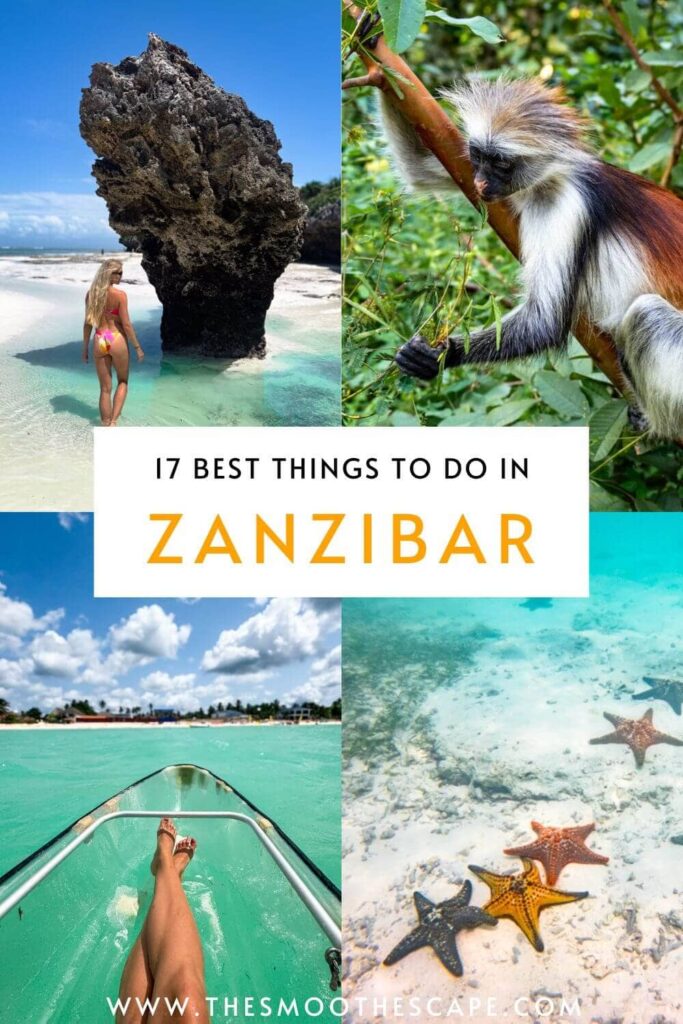
READ MORE:


